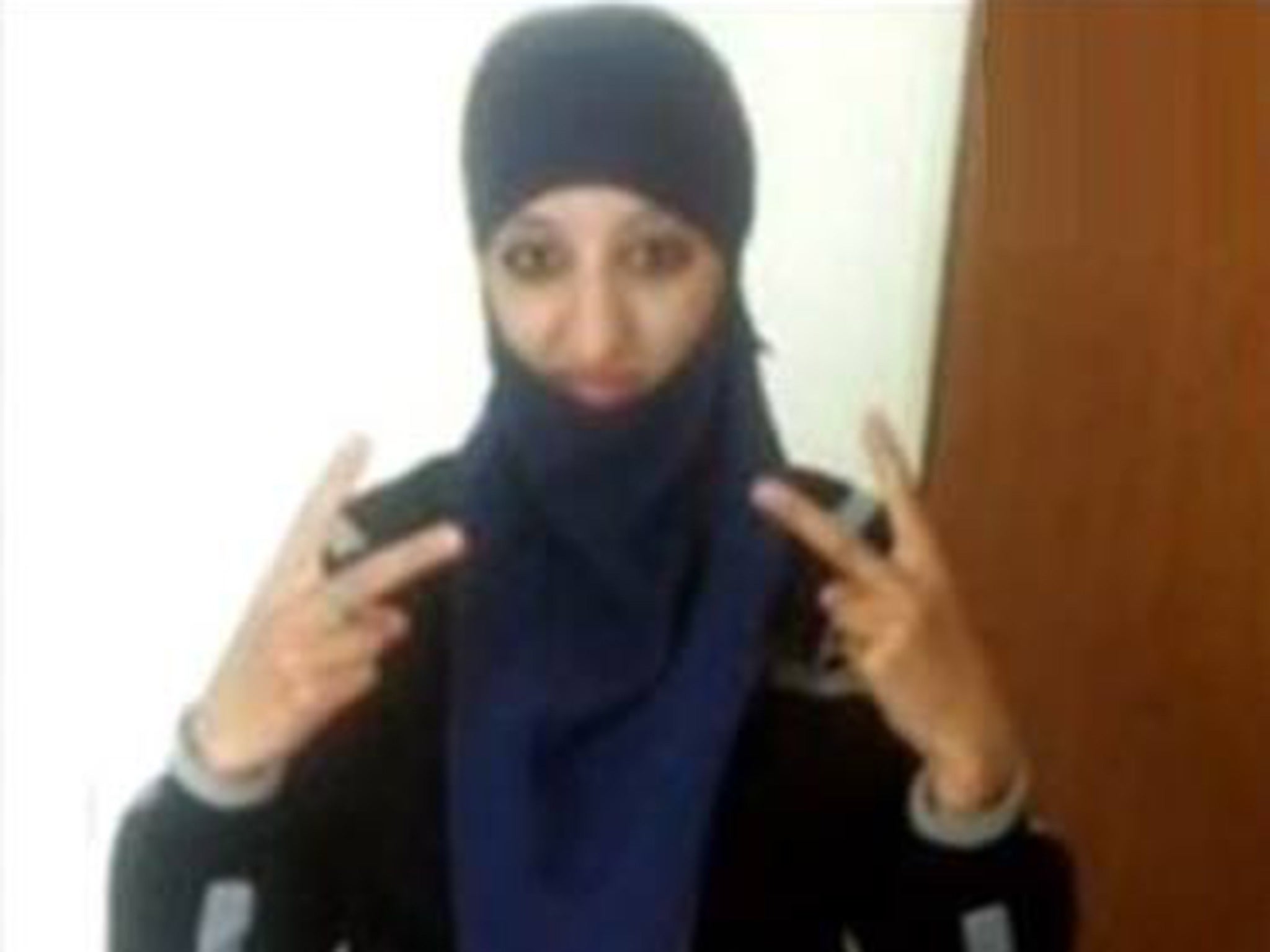Our patronising obsession with the 'party girl' Isis terrorist in Paris shows we still can't cope with the reality of women extremists
Hasna has been painted as a ‘type’ of woman – not just a terrorist, but someone who did not conform to subdued femininity. Are we to believe that, since she drank and had various romantic dalliances, she was more likely to commit a violent crime?

Europe Newsweek, reporting on the Paris attacks, included a revealing paragraph about female terrorists: these women increase the ‘shock value’ of an act of terrorism, giving it a greater ‘psychological impact’, since people come to ‘believe that any person can commit such an attack’. This in itself is a worrying perspective; if we continue to believe that criminals, or indeed sympathisers with Isis, fit a very certain profile then we ignore the truth standing right in front of us.
It is reductive to assume that all women are kind and harmless, as much as it is unfair on men to presume that violence is exclusively their domain – and the idea that women joining Isis is far more shocking ignores the fact that teenage girls have chosen to travel to Syria from the west of their own accord in significant numbers.
Take the coverage of Hasna Aitboulahcen, Western Europe’s first female suicide bomber, who killed herself with a suicide belt in Paris. The media interest was oddly different to that of the male Isis terrorists who accompanied her. For someone whose actions were so hateful and destructive, she has been discussed in a strangely patronising way.
It was repeatedly noted that she wore make-up, drank, had boyfriends and was, until recently, a ‘party animal’. Similar observations about a past involving alcohol have been made about several of the male terrorists who attacked Paris, making the point that they had not always been committed Muslims and their radicalisations had been recent. However, a less devout past has not come to define them in the same way as it has done Hasna Aitboulahcen; for the most part these have been passing comments, and descriptions of these men have been much more objective, focusing on their nationalities, physical descriptions and histories of any smaller crimes.
In contrast, the media fixated on Hasna’s ‘party girl’ past, which was discussed almost as proof of her history of smaller crime. It is the rhetoric, used by a range of mainstream newspapers, from broadsheets to tabloids, that is striking: she was an ‘extrovert’, a ‘boozing’ woman with ‘a string of boyfriends’ who had spent much of her childhood ‘in care’. Several articles discussed this at greater length than the attack itself. The implication that she might have had and enjoyed casual sex hung heavily in the air.
Hasna has been painted as a ‘type’ of woman – not just a terrorist, but someone who did not conform to femininity. She failed to be kind, caring, sensible and subdued. Are we to believe that, since she drank and had various romantic dalliances, she was more likely to commit a violent crime? This past seems to have condemned her as a good-girl-gone-bad, when in reality drinking, smoking and having boyfriends is nothing unusual for any woman in her mid-twenties. At some point, it seems that we have begun condemning her more for her past than for her violent crimes.
Being interviewed after the attack, Hasna’s brother revealed that ‘I never saw her open the Koran’. This is important, and a discussion about why we have seen a number of people transition from being only nominally Muslim – or not religious at all - to Isis extremists would have made for more interesting reading than allusions to her sexual history. It is, of course, significant that she was a female terrorist, and her actions raise questions about women’s roles in Isis, and whether these will change. These, for me, are the main questions we should be asking, rather than discussing her penchant for a ‘cowboy hat’.
When reading about people who have recently left Europe to join Isis, we tend to see the men and women treated differently: the men went to Syria, whereas the women were brainwashed or tricked into a life they knew nothing about. This takes agency away from the women who have been radicalised; they may have been vulnerable, but ultimately they made a deliberate decision to join a terrorist organisation, in the same way as their male counterparts did. We have to recognise their autonomy to understand why they used it in the way that they did.
Our homegrown female suicide bomber has proven that we still have a problem in dealing with women and girls who pursue violence and terrorism. To make a good story, the media’s discussion of these women often plays up to gender stereotypes, or presents them through a lens of misfortune, or of misadventure of their own making. While we condescend to them and suggest that they were too foolish or too female to realise what they were doing, we also let them off the hook.



Join our commenting forum
Join thought-provoking conversations, follow other Independent readers and see their replies